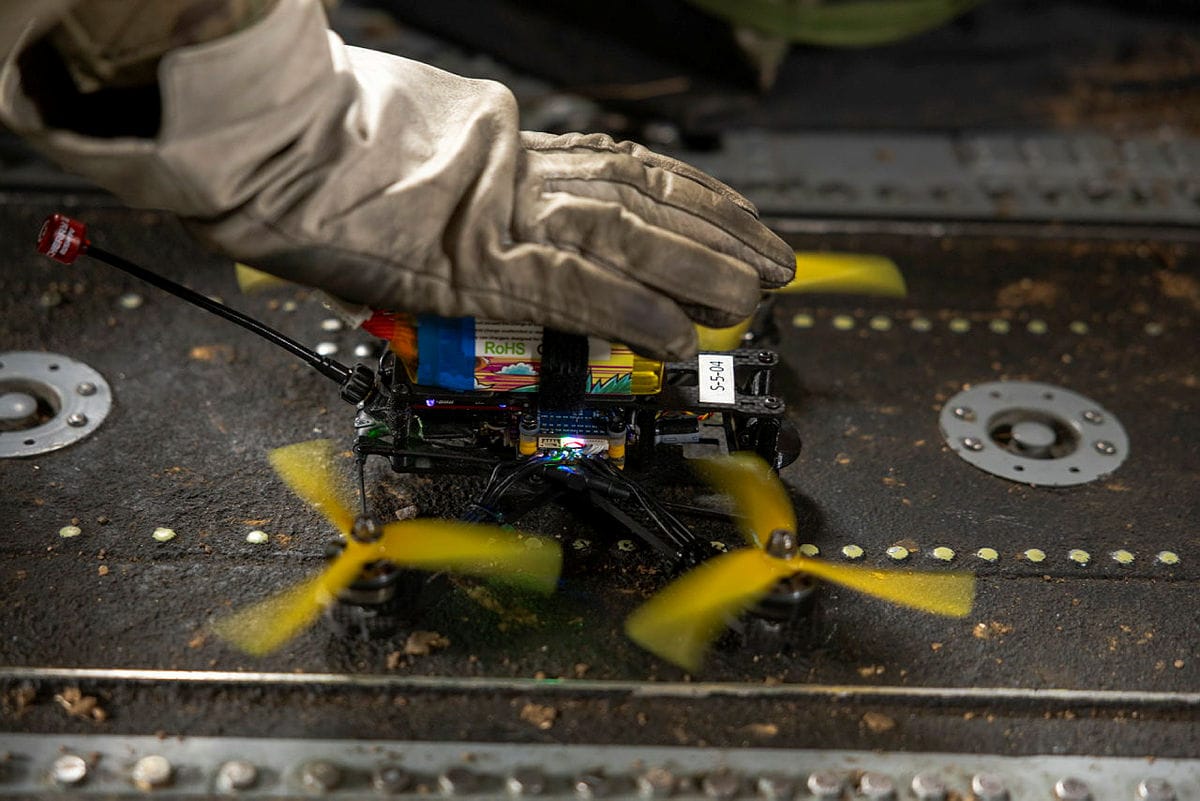
Efforts by the UK to overhaul air defences and create a highly integrated “system of systems” continue to slowly take shape – with MOD looking for a lead systems integrator for its Land GBAD (Ground Based Air Defence) programme.
Under Land GBAD, MOD is looking to improve its short-range air defence (SHORAD); medium-range air defence (MRAD); as well as its specialist counter uncrewed air systems (S-CUAS) for SHORAD and MRAD, it said this week.
(GBAD command was transferred from the RAF to the army on 1 April 2019.)
It’s also looking to boost “all arms counter small uncrewed aircraft systems” (All Arms C-sUAS) systems – a lengthy way of saying anti-drone capabilities, including rifle-mounted ones like the 225 SMASH sights ordered from Israel’s SMARTSHOOTER under a £4.6million MOD contract in June 2023 that can connect to basic SA80 A3 assault rifles.
But it needs a partner to hold the pieces together, it said.
It wants a lead systems integrator (LIS) (working under a five-year September 2026 – September 2031 contact, with a particular focus on “good integration, interoperability and use of open standards” according to a market notice.
“The capabilities which make up the Land GBAD System of Systems (SOS) will be incrementally procured and delivered through a number of related contracts over a 10-year period, these will require a high level of integration and SOS testing. Land GBAD will also consider novel weapons, where they are effective and sufficiently mature” - MOD
The LSI’s role will include:
- Co-ordination and management of programme aspects and stakeholders.
- Developing and maintaining Land GBAD architectures
- SOS requirements management
- SOS technical planning and plan development.
- Defining and agreeing SoS interfaces.
- Planning and conducting SoS trials.
Land GBAD is a "Category A" Government Major Project Portfolio (GMPP) programme that first reared its head as a proposal for a meaningfully modernised, integrated set of systems in 2022. Market engagement notices for elements of it have dribbled in from 2023 onwards. Public intention to seek an “LSI” to help stitch the various elements of it together at this stage somewhat suggests that progress hasn’t been blisteringly fast or coordinated to-date.
Speaking in 2024, Major General James Martin said: “What we have learnt from the Ukraine conflict is that the GBAD brief has to be extended from a purely defence capability to an attack and defence capability to enable the systems to go hunting not just fishing. General Sir Rowley Walker the incoming CGS [Chief of the General Staff] has emphasised the need for lethality to double by 2027 and treble by 2030,” he said, speaking at the 2024 GBAD Expo.
“One of the prime roles for GBSAD will be axis area denial using long-range fires with control of the air being vital. In addition, the new and growing drone threat means that new C-UAS systems need to be integrated into existing GBSAD systems such as SkyKeeper BMC4I and LEAPP, in soft and hard kill modes, 60% of today’s threats come from UAS systems. Current C-UASS systems require upgrades to keep abreast of new UAS technologies, particularly the Iranian Shaheed UAS. In today’s wars, all domains will be contested. GBAD must be used offensively, taking risks pays off. We need a complete cultural shift in the way the British Army deploys GBAD,” he said, as reported by Battlespace.
As Jack Watling and Sidharth Kaushal argued meanwhile in an April 2024 RUSI paper: “ certain types of targets, such as many UAVs, which are relevant in aland context, are not ones the RN or RAF focus on countering in planning and training. Finally, a land component, depending on how far inland it is, may not be able to draw on naval support.
"The British Army’s GBAD capability should, then, be able to provide a degree of organic protection for fielded forces at the divisional level (and below) against short-range tactical threats. It should also, if needed, be able to reinforce national and Alliance capacity against some operational and strategic threats…” the two wrote.
They concluded: “Strategic Command must exercise influence over C2 for the Land GBAD programme to ensure that it is compatible with developments within the army and across the other services, and critically that the UK’s Multi-Domain Integrated Systems programme addresses the problem of blue-force tracking in the context of expanded UAS and C-UAS coverage across the battlefield. The risk of fratricide in an environment saturated with aerial objects is real, and is amplified as air defence elements become required to operate in isolation.”
Under a preliminary market engagement notice, MOD is also starting to look for a company to furnish a Passive Sensor within the Land GBAD network, specifically in the SHORAD area, it said this week. More Land GBAD procurement activity is expected soon.
Sign up for Defence Nexus
National security and technology interviews, insight, and intelligence for decision makers across NATO's five domains.
No spam. Unsubscribe anytime.

